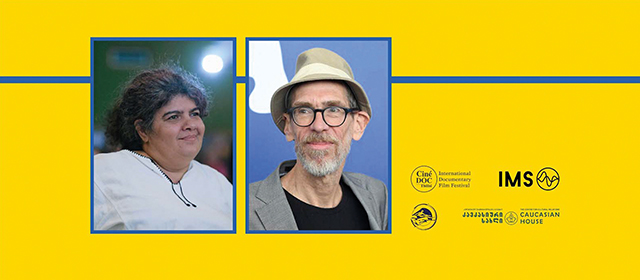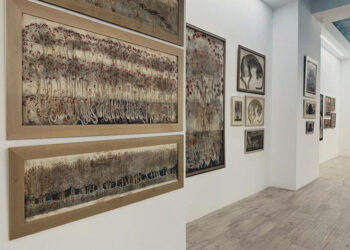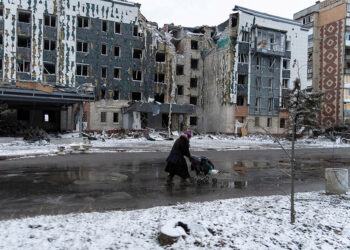Georgia has seen an increase in its youth and grassroots independent filmmaking scene. With increased resources and growing interest from film hubs in Europe, more prospective directors have debuted with their own local material. Acting as a conduit for this is CineDOC Tbilisi.
CinéDOC Tbilisi is the first film festival in Georgia to be supported by the Creative Europe Program of the European Union, and is the main international documentary film festival of the Caucasus region. While acting as a connection for experienced filmmakers and university or youth programs, they also host new film screenings, debates, question-and-answer sessions, and master classes with leading figures. Further, CineDOC Tbilisi says they aim “to be a sustainable platform for regional and international documentary filmmakers, showcasing a compelling selection of thought-provoking documentary films.”
The organization held a documentary film editing workshop in the Shota Rustaveli Theater and Film University last week, where a pairing of documentaries was presented for the students and guests. Niels Pagh Andersen and Dana Bunescu, two experienced filmmakers from Denmark and Romania respectively, presented their work, followed by a discussion session. The two works, “Evropa” and “Outside,” offered the viewers insight into using various editing and videographic devices to enhance the viewers’ experience.
“Evropa,” directed by Dana Bunescu and Razvan Radulescu, follows the journey of a group of German film students as they tour Ukraine in the wake of the Maidan Revolution. While the original goal of filming the revolution eluded them, they take it upon themselves to film everything they can in hopes of salvaging their project. Traveling to the infamous site of Chernobyl, they find their way changing, with unexpected encounters and new friends made.
The second film, “Outside,” directed by Olha Zhurba, shows the life of a young boy on the streets of Kyiv. At only 13, Roma took part in the Maidan Revolution, engaging police with rocks and firebombs, with nowhere to call home. As he grows up alongside other wayward youth, the director and Roma share updates in the boy’s life that show someone with their identity taken from them and left outside the frames of normal society.
Following each film, the veteran directors shared insights into the films, which they used to elicit emotions in the audience that elevated the connection to the characters. For “Evropa,” the lengthy shots of the young German students put the viewer in the position of being with them, in the situations themselves, such as when, in one instance, the camper van being used by the students becomes stuck in the mud near a village. With the amount of footage being shot, the entire process of finding someone to assist them and then pulling the camper out is filmed in a “found footage” presentation. Each frustrating minute of waiting to find the right villager, the equipment, and communicating with no translator or shared language is caught on film. The emotions and constant anticipation is felt by the viewer, sharing the fraught emotions of the boys as they pantomime their wishes to the locals. Finally, in true village fashion, the students are invited to have dinner with the two local residents after their vehicle is recovered. In an evening of revelry and memory sharing, the group shares moments together that many in the audience related to with Georgia’s mirrored traditions of hospitality. As the film closed, viewers shared thoughts, critiques, and technical questions with director Dana Bunescu.
In the following screening, Ukrainian filmmaker Olha Zhurba’s “Outside” is presented with consulting director and seasoned filmmaker Niels Pagh Andersen. The film follows the childhood of a young boy, Roma, who is left in an orphanage in Kyiv. During the Ukrainian Revolution in 2014, 13-year-old Roma slipped out to the front line. Becoming a popular figure amongst the resistance as they battle brutal police attacks, his popular image clashed with his near-homeless life.
Growing up, Roma becomes integrated into the “street life” of petty crime and substance abuse. He settles into living with his brother, who also exists on the fringes of society and handles their ostracized status in his own gritty way. Roma seems intent on finding some semblance of family, meaning, and place in a world that appears to have robbed him of all these at a young age, replaced by sheer survival and violence.
The film’s use of archival footage, security camera captures, and often black screen imagery bring out an almost criminal existence for the young boy. Scenes of walking in abandoned or remote places, avoiding the lights of police patrols, give viewers an uncensored glimpse into Roma’s harsh life. Additionally, the use of a black screen gives the audience a feeling of Roma never truly being able to connect with the speaker (the director) despite years of communications.
These films, while taking place outside of Georgia, seemed to find a place in the hearts of the viewers. During the discussion periods following both films, the audience included personal stories, scenes from their own lives that had a connection to the events in the films. Clearly, the goals set out by the directors visiting Tbilisi were attained, if not exceeded. The emotions were palpable.
CineDOC Tbilisi, together with the filmmaker guests in both instances, appears to have left the audience both inspired and introspective. True to their mission, CineDOC Tbilisi shows thought-provoking documentary films for the next generation of filmmakers in Georgia.
By Michael Godwin














